Edinburgh, Regent Road, St Andrew's House
Office(S) (20th Century), War Memorial (20th Century)
Site Name Edinburgh, Regent Road, St Andrew's House
Classification Office(S) (20th Century), War Memorial (20th Century)
Alternative Name(s) The Scottish Government; Scottish Executive; Scottish Office
Canmore ID 52266
Site Number NT27SE 245
NGR NT 26166 74021
Datum OSGB36 - NGR
Permalink http://canmore.org.uk/site/52266















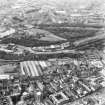
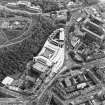
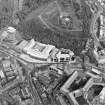
























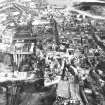
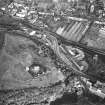
















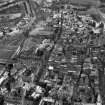













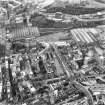

















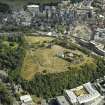
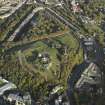
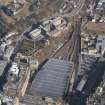






First 100 images shown. See the Collections panel (below) for a link to all digital images.
- Council Edinburgh, City Of
- Parish Edinburgh (Edinburgh, City Of)
- Former Region Lothian
- Former District City Of Edinburgh
- Former County Midlothian
NT27SE 245.00 26166 74021
NT27SE 245.01 26089 73982 Governor's House
ARCHITECT: T.S.Tait, 1939.
EXTERNAL REFERENCE:
National Archive of Scotland:
Proposal to use the Calton Prison site for government offices and the search for an alternative site for the gaol by Walter E Scott, the Master of Polwarth, who represents the Prison Commission for Scotland
1912-13. GD193/Box23/File24
NMRS REFERENCE:
Inglis Photograph Collection Acc. 1994/90 C65840-C65877 and C21381 Copied 1996.
Exterior: 2 Views of the steel frame floodlit at night (4 prints) and 1 by day
6 Views during construction, several viewpoints (8 prints)
5 General views of the street front completed (14 prints)
1 View from Market Street over railway station
7 Views of central block including details of door (13 prints)
6 Details of side doors and gates and front court (9 prints)
Interior: 2 Views of entrance hall
4 Views of office suites (6 prints) including some furniture
1 Boardroom, furnished
1 Canteen, including furniture
Typing pool in use (2 prints)
Kitchen behind the canteen.
Newspaper cutting:
November, 15th, 1952 - Edinburgh Evening Dispatch, photograph - missing at time of upgrade, 1.2.2000
(Undated) information in NMRS.
Design draws freely on modern Beaux- Arts, American, and Dutch sources. Stonework detailing by Esme Gordon. Allegorical sculpted figures by Sir William Reid Dick. Royal Coat of Arms by Alexander Carrick. Subsidiary entrance sculpture by Phyllis Bone. Bronze doors with themes from life of St Andrew by Walter Gilbert. Ironwork by Thomas Hadden. Originally intended to be built in white Portland stone, actually built in Northumbrian Darney stone. Architect's proposed roof gardens vetoed by Office of Works and Scottish Office. Architect approached on, but never offered knighthood. Opened October 1939; royal opening postponed until 1940 owing to outbreak of war.
Prospect 1989; RIAS 1990; D M Walker 1991.
Project (1997)
The Public Monuments and Sculpture Association (http://www.pmsa.org.uk/) set up a National Recording Project in 1997 with the aim of making a survey of public monuments and sculpture in Britain ranging from medieval monuments to the most contemporary works. Information from the Edinburgh project was added to the RCAHMS database in October 2010 and again in 2012.
The PMSA (Public Monuments and Sculpture Association) Edinburgh Sculpture Project has been supported by Eastern Photocolour, Edinburgh College of Art, the Edinburgh World Heritage Trust, Historic Scotland, the Hope Scott Trust, The Old Edinburgh Club, the Pilgrim Trust, the RCAHMS, and the Scottish Archive Network.
Field Visit (25 April 2002)
Gates constructed of thin railings with a central circular motif of two cast bronze lions rampant facing each other. Cast bronze thistle in top left and right corners. Circle around lions painted yellow. Rest of gate painted black, apart from sculptures.
There are also security bars over the windows with pairs of yellow painted metal lions rampant at the top, facing each other.
See EDIN0995
Inspected By : AA Campbell
Inscriptions : None
Signatures : None
Design period : 1935-1939
Information from Public Monuments and Sculpture Association (PMSA Work Ref : EDIN0998)
Field Visit (3 May 2002)
Six half length sculptures at top of square pillars on front of building.
(1) Architecture: male figure holding scroll in right hand, set square in left.
(2) State Craft: male figure holding open scroll with seal at base, in both hands. (3) Health: female figure holding bowl, snake winding up her left side.
(4) Agriculture: female figure holding sickle in both hands.
(5) Fisheries: male figure holding boat in both hands.
(6) Education: male figure holding open book in both hands.
St Andrew's House was built to house government departments, and stands on the site of the old Calton Jail. Building work started in November 1935 and the foundation stone was laid by the Duke of Gloucester on 28 April 1937. The building was completed in August 1939.
Inspected By : A Taubman
Inscriptions : On the left of each sculpture (incised letters):
ARCHITECTURE / STATE CRAFT / HEALTH
On the right of each sculpture (incised letters):
AGRICULTURE / FISHERIES / EDUCATION
Signatures : None Visible
Design period : 1935-1939
Year of unveiling : 1939 (?)
Unveiling details : August 1939
Information from Public Monuments and Sculpture Association (PMSA Work Ref : EDIN0995)
Field Visit (30 May 2002)
Left shield: St Andrew's cross, shield topped by crown, sceptre to left and right. Left panel: Unicorn rampant.
Right shield: St George's cross, shield topped by crown, sceptre to left and right. Right panel: Lion rampant.
See EDIN0995
Inspected By : A Taubman
Inscriptions : None Visible
Signatures : None Visible
Design period : 1935-1939
Information from Public Monuments and Sculpture Association (PMSA Work Ref : EDIN0999)
Field Visit (26 January 2009)
Central shield, topped by crowned helmet between unicorn on left and lion rampant on right. Surrounded by foliage and scrollwork. Unicorn holds saltire, lion holds St George's cross. The shield is quartered: lion rampant (top left and bottom right): harp (bottom left), three lions (top right). Shield surrounded by wreath of leaves and thistles from which hangs a medallion of St Andrew and his cross. Pillars on either side topped with relief carving of shamrocks, thistles and roses.
See EDIN0995
Inspected By : A. Taubman
Inscriptions : At top of coat of arms: IN DEFENS
On ribbon at bottom of coat of arms: NEMO . ME . I[MPUN]E . LAC[ES]SIT (some letters are covered by lion's and unicorn's hind legs)
Signatures : None Visible
Design period : 1935-1939
Information from Public Monuments and Sculpture Association (PMSA Work Ref : EDIN0996)
Field Visit (26 January 2009)
Bronze doors decorated with a large St Andrew's cross (which covers both doors) and saints in low relief. In the centre of the doors (when closed) is a circle containing Jesus with a fishing net (left) and St Andrew (right).
Right door: top left St. Magnus holding an axe and shield surrounded by flora. Below is St Columba holding a bishop's crook with a boat inside the handle and a bird by his left shoulder, surrounded by flora. A boat is at the lower left.
Left door: top St. Kentigern holding a large salmon in his left hand and a ring in his right. He has a crook on his right shoulder, and fruit and a bird behind. A small boat with a figure in it is on the right. Below is St Ninian with a crook, a building on the right with ears of wheat, and pine cones on the left. At the bottom are two boats with fisherfolk.
The door handles are each decorated with a lion with a crown on its head holding a banner with lettering; sitting on top of a decorative shaft with a thistle surmounted by a crown, and with a fish at its base.
See EDIN0995
The doors are designed to symbolise St Andrew's Cross. The main theme is "The Divine Call to St Andrew, Patron Saint of Scotland, 'Follow me and ye shall be fishers of men.' " (1)
St Kentigern (also known as St Mungo), c.518-603, bishop, founded the See of Glasgow.
St Ninian, c.360-c.432, founded Whithorn Priory in 397 AD, the first Christian settlement north of Hadrian's Wall.
St Magnus of Orkney, 1080-1118 (?).
St Columba, 521-597, Abbot of Iona.
Inspected By : A. Taubman
Inscriptions : On left door, to left of handle (raised letters): AND I WILL / MAKE YOU
On right door, to right of handle (raised letters): FISHERS OF / MEN
Beside figures (raised letters): ST. KENTIGERN, ST. NINIAN, ST. MAGNUS, ST. COLUMBA
On door handles (raised letters): G VI R / ER
On banner held by lion sejant at top of each door handle (raised letters): NEM[O] ME [I]M[PUNE] [LAC]ES]SIT]
Signatures : At bottom of right door (incised letters): Gilbert / W
Design period : 1935-1939
Information from Public Monuments and Sculpture Association (PMSA Work Ref : EDIN0997)









































































































